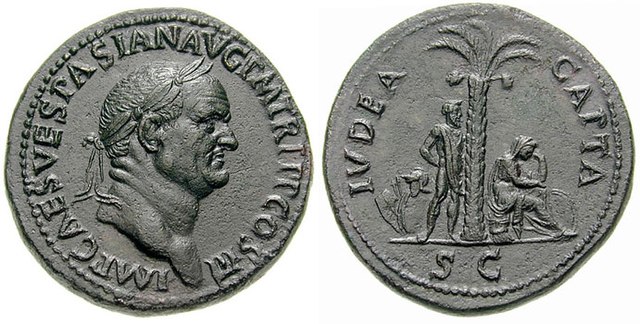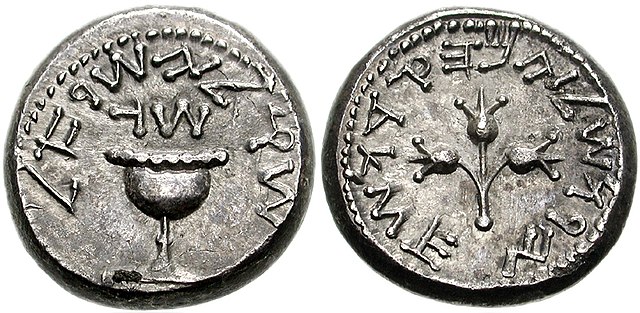Judaea Capta coins were a series of commemorative coins originally issued by the Roman Emperor Vespasian to celebrate the capture of Judaea and the destruction of the Second Jewish Temple by his son Titus in 70 CE during the First Jewish Revolt. There are several variants of the coinage. The reverse of the coins may show a female seated right in an attitude of mourning at the base of a palm tree, with either a captive bearded male standing left, with his hands bound behind his back, or the standing figure of the victorious emperor, or the goddess Victoria, with a trophy of weapons, shields, and helmets to the left.
'Judea Capta' sestertius of Vespasian, struck in 71 AD to celebrate the victory in the Jewish Revolt. The inscription on the reverse says: IVDAEA CAPTA, "Judaea conquered".
Aureus of Vespasian, IUDAEA DEVICTA
'Judaea Capta' coin issued by Agrippa II
The First Jewish–Roman War, sometimes called the Great Jewish Revolt, or The Jewish War, was the first of three major rebellions by the Jews against the Roman Empire fought in Roman-controlled Judea, resulting in the destruction of Jewish towns, the displacement of its people and the appropriation of land for Roman military use, as well as the destruction of the Jewish Temple and polity.
Roman-era ballista (reconstructed at Gamla)
A coin issued by the rebels in 68, note Paleo-Hebrew alphabet. Obverse: "Shekel, Israel. Year 3." Reverse: "Jerusalem the Holy"
Roman milestone mentioning the destruction of highways during the revolt
The treasures of Jerusalem taken by the Romans (detail from the Arch of Titus).







